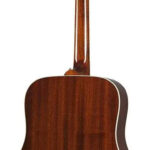Instructional PDF 3 pages
Follow along with the print-friendly PDF! It includes all of my notes for this lesson, allowing you to follow along at your own pace. You’re free to download, print, and share the PDF across your devices.
Thanks for being a Premium member of Song Notes! Your support makes these lessons possible.
Download PDF
Follow along with the print-friendly PDF!
It includes all of my notes for this lesson, allowing you to follow along at your own pace. You’re free to download, print, and share the PDF across your devices.
To download the PDF, upgrade to premium or log in.
Editor’s Notes: Guitar Chords to Ukulele Made Simple
Are you a guitarist looking to explore the delightful sounds of the ukulele? You might be surprised to learn just how easily your existing guitar chord knowledge can be transferred to the ukulele. In this guide, we’ll break down the simple relationship between guitar chords and ukulele chords, showing you how to play ukulele chords using the guitar chord shapes you already know. We’ll cover how 6-string guitar chords translate onto a 4-string ukulele and clarify any pitch differences you might encounter. The goal is to demonstrate that learning ukulele chords as a guitarist is not only achievable but also surprisingly intuitive.
Understanding Chord Shapes: Your Guitar Knowledge is Key
One of the most exciting aspects of learning ukulele for guitarists is realizing that the chord shapes you’ve practiced on guitar are directly applicable to the ukulele. The fundamental principle is simple: the shapes you make for guitar chords can be used on the ukulele by playing the top four thinnest strings of the guitar chord shape.
Essentially, if you take a standard guitar chord shape and only consider the highest four strings (in pitch), you’re already playing a ukulele chord shape! This is because the tuning of the ukulele closely relates to the higher strings of a guitar.
This image illustrates how the shapes you use for guitar chords are directly transferable to the ukulele. By using the same finger positions on the ukulele fretboard, you can play familiar chord shapes.
This means you can play any sequence of chord “shapes” you know on guitar on a ukulele, and they will sound musically coherent and pleasing. However, it’s important to note that while the shapes are the same, the actual chord names and pitches will be different between the guitar and ukulele. This is due to the difference in tuning between the two instruments.
Chords by Sound vs. Shape: Name vs. Form
While the shapes are transferable, it’s crucial to understand the distinction between chord shapes and chord sounds. Using the same shape on guitar and ukulele will result in a different chord being played on each instrument. This is where you need to start thinking about the shape independently from the name of the chord you play on guitar.
For example, a common “C shape” on guitar, when played as the same shape on ukulele, will not produce a C chord on the ukulele. Instead, it will produce a different chord altogether.
This image highlights that while the hand positions might be similar, the resulting chords on a guitar and ukulele with the same shape will have different names and sounds because of the instruments’ distinct tunings.
To play a specific chord on the ukulele (like a C chord, G chord, etc.), you will often need to use different shapes than you would on the guitar. This requires a mental shift – disassociating the shape you know on guitar with its guitar chord name and learning the new ukulele chord name associated with that shape when played on the uke.
Common Chord Progressions: Universal Music Patterns
Despite the difference in tuning and chord names, the relationship between chords in a progression remains consistent between guitar and ukulele. A fundamental concept in music is the I-IV-V chord progression. This progression, built from the 1st, 4th, and 5th degrees of any musical key, is universally pleasing and used in countless songs across genres.
Here are examples of I-IV-V progressions in common keys, showing the chord shapes used on both ukulele and guitar. Notice how the sequence of shapes and their relationship to each other is similar across both instruments, even though the chord names are different.
This image presents common I-IV-V chord progressions in popular musical keys, showing the specific chord shapes for both ukulele and guitar. Observe the consistent relationship between the shapes within each progression across both instruments.
By understanding this relationship, you can easily adapt your favorite guitar songs to the ukulele. You might not be playing in the original key, but the song’s harmonic structure and chord progression will be preserved.
Get Started and Explore!
Hopefully, this guide has illuminated how accessible ukulele chords are for guitar players. The key takeaway is that your guitar chord shape knowledge is a valuable head start in your ukulele journey. While chord names and pitches will differ, the shapes themselves are your bridge to playing ukulele chords.
For a more in-depth understanding and demonstration, be sure to check out the video lesson accompanying this guide. Don’t hesitate to ask any questions you might have as you explore this exciting transition. Happy playing, and best of luck as you begin to unlock the world of ukulele with your guitar chord expertise!

